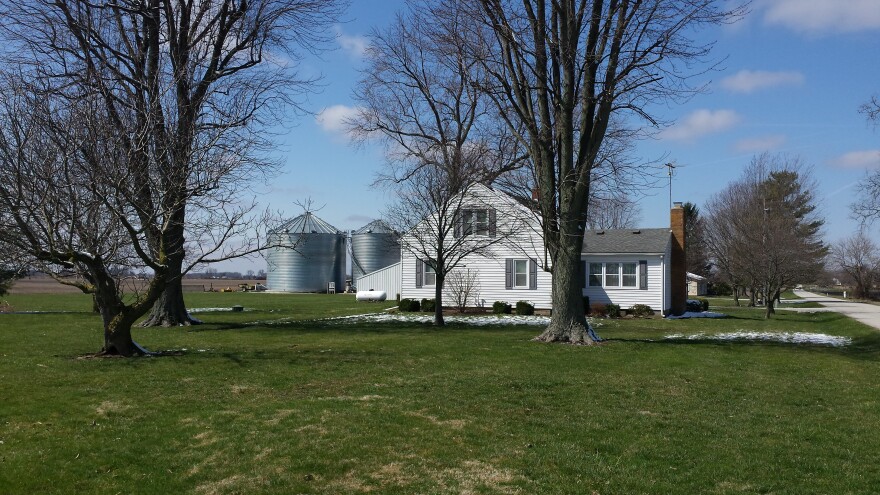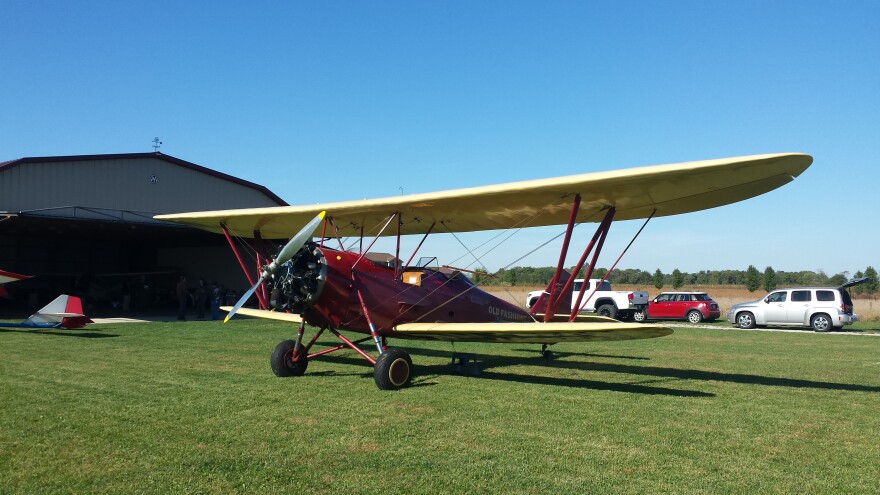Although the term Urban Sprawl was coined in the 1930’s, by the ‘70’s, it was a hot topic, as increasingly more rural areas, and farmland, were divided up and paved over into strip malls and subdivisions.
This spreading ring around our cities where urban sprawl is happening is officially known as the Rural-Urban Fringe. Today on County Lines, producer Renee Wilde takes us there.
The Rural-Urban Fringe is a transition zone between town and country, where rural and urban uses meet, mix.…..and sometimes clash.
In 1969, Mary and Robert Boeck, along with their 3 young sons, moved their dairy operation to a 178 acre farm in Jamestown, Ohio. Back then, the area was a thriving farming community.

Mary, now 88, and two of her sons, David and Tim, are gathered around the her kitchen table in that original farmhouse. Her son’s describe when they first moved here.
Tim reflects back on that time, “Well, Hogs were prevalent in this area this area because a lot of corn in this area, so it was hogs and beef cattle.”
David adds, “And once we got up here, what, for six months probably, Dad went down to Spring Valley until we transformed the hog barns to cattle barns to move the dairy herd up here.
Mary’s husband got cancer in ‘91. Tim tells me, “When dad passed away, David and I then rented the farm from mom and started grain farming and raised a few head of cattle.”
David and Tim are now in their 50’s with families of their own and urban sprawl is pushing in on the land that they have farmed for past five decades. The Boeck brothers wanted to preserve their farming heritage their kids and grandkids.
David says,” On the other side of the county they’re building up more and more, and there is less and less farm ground. Sooner or later you’re gonna need to feed the people and you’re gonna need the ground. So we just thought this was a good opportunity to join the block around us and create a larger area that would be preserved agriculture.“
The Boeck brothers joined with some of their surrounding neighbors, and put their property into a farmland preservation easement with the help of the Tecumseh Land Trust, a non-profit group that works with local farmers to preserve Ohio’s farmlands.
David estimates, “There are six or seven farms that’s joined up here that are all together now.”
Tim adds, “There’s a couple thousand acres all together now.”
During the 4 year process to secure the easement, the Boecks could see the urban sprawl growing closer to their farmland.
Tim explains, “There’s a farm about 2 to 3 miles from here that was split up into housing development. It was a very, very productive farm, and we hated to see that……….disappear.”
The sound of a small airplane roars above the farm fields surrounding the Boeck's property. The plane belongs to a local resident who bought a piece of that neighboring farm Tim Boeck was talking about.
When that former farm was divided into around 20 different plots, three pilots bought land to build homes with adjacent private grass airstrips.

Jeff Stintson was one of the first. He says “We were looking for a place in the country, and this whole farm used to be one big farm, 500 acres and they started dividing it up and I thought well I can make a nice strip there, so I bought that and built the strip.”
Jeff and fellow neighbor and pilot Dewey Davenport, are sitting in lawn chairs outside a large pole barn filled with vintage biplanes on Dewey’s property.
Dewey explains why these plots of former farmland were perfect for them.
“If you notice pretty much every airplane that’s in here is an antique, and their made for grass runways, and short takeoff and landing type flying,” Dewey says. “So it’s about a quarter mile long. It’s a perfect length.”
As the 20 or so lots from the original sale of the farm continue to be re-subdivided and sold, more houses and barns are cropping up on the road.
Jeff looks around at the houses lining the rural street and says, “ We’ve been in our place for 8 or 9 years now, and we’ve seen it, where you could look down the road and see one neighbor, and now I’m seeing 6 or 7 houses.”
The irony isn’t lost on them that the same continued sale of farmland that allowed them to build their country airstrips, may also be the reason they get pushed out of the area eventually.
As the rural-urban fringe continues to push outward, it’s gobbling up farm land at an amazing speed. Since 1950 over 7 million acres of Ohio farmland have been lost. Only two thirds remain.
Through their preservation easement, David and Tim Boeck know that their will farm will be one of those that remain for the next generation.
Tim explains, “ We’re not in it for the profit. We’re in it cause we like the lifestyle. We like to see plants come up in the spring. And we like to see plants be productive.
We want to see the ground survive. We want to see it remain productive.”
His brother Dave agrees and adds, “You know, it’s in our best interests to take care of everything, and preserve the resources.”
County Lines is WYSO’s new series focusing on small towns and rural communities in the Miami Valley and beyond. Community Voices producer Renee Wilde travels down the highways and back roads to bring WYSO listeners stories of country life that go beyond the stereotypes. County Lines is made possible by a generous grant from Ohio Humanities.



